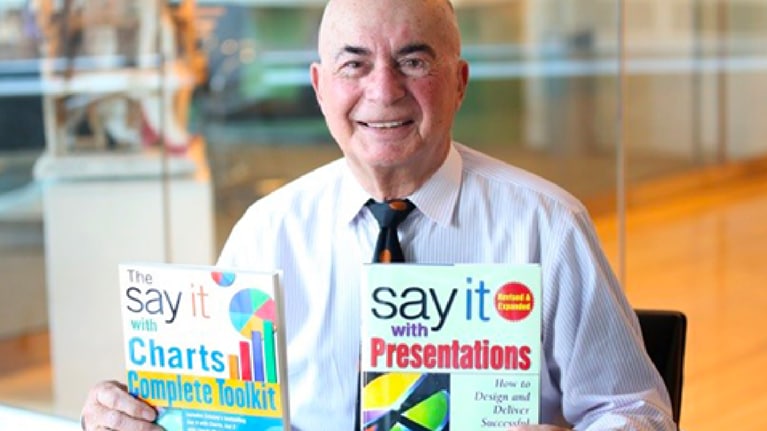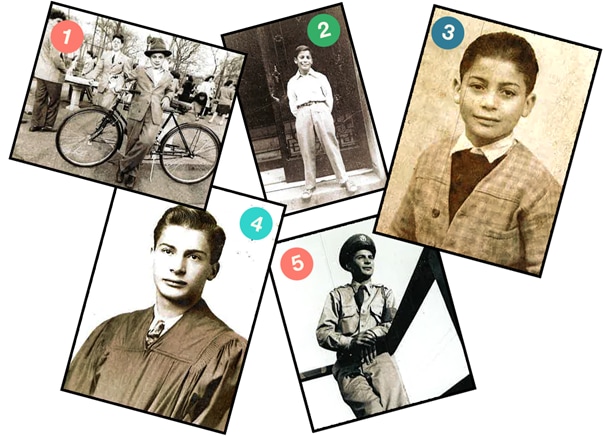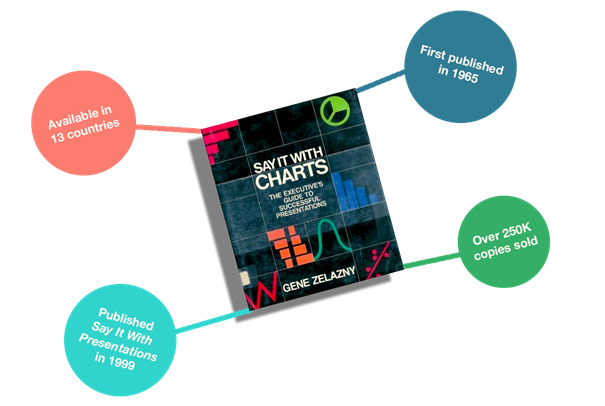
On April 30, 2023, Firm alum Gene Zelazny (NYO 61-09) passed away.
In a note to colleagues, Global Managing Partner Bob Sternfels said: "After more than 50 years as part of our Firm community, our former colleague Gene Zelazny has passed away due to complications from Alzheimer’s. Gene, who worked alongside Marvin Bower, was a shining example of what it means to self-author a career at our Firm and leave it better than it was found.
"It was Gene who created the use of charts as our mode of communication and he elevated them to an art form. This became even more important as our Firm grew across continents and oceans; his charts became the standard by which we all—no matter where we live and work—communicate with each other and with our clients. Here’s a passage from our Firm History book: 'Charts were elevated to a high art at McKinsey during the late 1970s and early ’80s. McKinsey’s longtime visual communications director, Gene Zelazny, revolutionized this form of communication within the Firm. Zelazny was a pioneer in the use of visual communications in business. His oft-reissued book, 'Say it with Charts,' was first published in 1985 and was printed in multiple languages. Some charts, such as the “Waterfall Chart,” were invented by McKinsey.'
"Gene was known for his gracious demeanor, good humor and the high bar he kept for the way we communicate. He will be missed by so many, but his mark on our Firm remains."
The below piece from 2017 describes how he became a part of our Firm’s history and created a legacy.
____________
It’s easy to pinpoint where Gene Zelazny’s story begins: It’s the exact moment he changed his name to Gene Zelazny.
“At my high school graduation ceremony, my name still had the French spelling—Jean,” Gene says. “The school called all the graduating men in alphabetical order, and they didn’t call my name. Then they started calling the women in alphabetical order, and there I was in the Js.”
He crossed the stage to accept his diploma to the sound of raucous applause (and a little laughter) from the audience.
“After that,” he says, “I changed the spelling to Gene.”
Becoming Gene Zelazny
Jean-Claude Zelaznagora was born in Paris in 1934. Nazis would occupy his country by the time he was five, and a few years later Gene and his mother would flee a post-World War II France in search of a better life in New York. It would come at a price.

“I was in a plane accident in Ireland on the way to America,” Gene says. He sustained serious injuries that put him in the hospital, but his mother was killed.
When Gene finally arrived in New York, he shortened his last name from its original Polish form so it would match the spelling his relatives chose when they became U.S. citizens. He moved into the Bronx home of his aunt and uncle, who raised Gene alongside his two cousins. They taught him English and helped him make a home for himself in the States.
A few more years would pass before Gene and his father, who had been imprisoned in Switzerland during the war, reunited in the U.S.
One thing you might know about Gene if you’ve met him: He custom-designed a baseball cap that reads, “Da Bronx,” because, well, “that’s how you say it.”
He attended Hunter College shortly after it became coeducational, making him one of the school’s first male students. This was only one of the trails he blazed at Hunter; Gene also became the first captain of the first men’s tennis team, and he started the college’s cartography program.
“I said to the registrar, ‘You have this map-drawing course in the catalog, so why don’t you offer it?’” he says. “She said, ‘Gene, find yourself six students and a teacher, and you can start the class.’ So I did.”
This was Gene’s introduction to charting, and neither he nor the amenable registrar could have guessed just how much ground he would cover with his map- and chart-drawing abilities.
Gene joins the Firm—and begins to shape it
After graduating college and serving in the Air Force, Gene got a job drawing charts and hand lettering documents at a New York marketing firm. One morning after nearly five years there, he flipped open the New York Times to a page that grabbed his attention.
Amid the news of the day—bulletins about the Space Race, John F. Kennedy’s presidential campaign, and rumblings of unrest in Vietnam—he found an ad seeking a charts expert for work at a growing consultancy.
Intrigued, Gene applied for the position as a Visual Aids Consultant. He was one of seven applicants, and he got the job—plus the hefty raise that came with it.
“My salary went from $6,000 a year to $8,000,” he says. “In those days, the difference was huge.”
Larry Munson, who worked at the Firm from 1953 to 1967 and was right-hand man to then-Managing Partner Marvin Bower, gave Gene some advice that would guide his Firm career: “He said, ‘Gene, you’re going to find a lot of people who don’t want to use your services. Don’t worry about that. They’ll just aggravate you. But for those who do want to use your services, you can never do enough. Let the quality of your work speak for itself.’”
He started working with consultants by simplifying and beautifying charts to make them more client-friendly. Then he worked with more consultants on more charts. And then more.
Eventually even those wary colleagues came to know and respect Gene, and in time he became equally renowned for his presentation skills, which he refined over the course of hundreds of speeches at Firm offices and at a dozen business schools worldwide.
A word with Marvin
Gene’s first seven years at the Firm, from 1960-67, overlapped with Marvin Bower’s term as Managing Partner.
One anecdote from that period stands out: The time he provided Marvin with constructive criticism on something he wrote (and he felt all the anxiety that you’d expect one might). Marvin’s response—warm agreement and eagerness to collaborate—showed Gene the degree to which Marvin believed in the Firm’s values, “the obligation to dissent” chief among them.
If he hadn’t been hooked on life at the Firm before, that was the moment Gene truly committed to McKinsey. Decades later, he still proudly upholds Marvin’s vision.

Sharing the love of charts
Elsewhere in the Firm around that time, a Partner named Bob Schmidt was leaving to run a publishing company. On his way out he asked Gene when he could expect a book on charts.
“I said, ‘Me, write a book? What are you talking about? I’ve never written a book!’ But I thought about it and it seemed like a good idea,” Gene says. “So I took a day off every week for six weeks, and I wrote the six chapters of my first book.”
In 1965, “Say it with Charts” was published under Bob’s imprint, and it became more popular than Gene could have imagined. “Today there are 250,000 copies of it published in 13 countries,” he says.
And those are just the numbers for “Charts”—Gene also published “Say it with Presentations” in 1999, and a book of personal essays called “In the Moment” in 2001.
Through his books, and especially in “In the Moment,” Gene offers a glimpse of his life beyond our Firm. He brings his early memories of WWII Paris to life with the same vivid detail he applies to a remarkable moment at a London McDonald’s or a little-noticed tragedy on his morning commute.
Whether he’s writing about presentations, charts, his life to date, or even hand lettering a document, it’s clear Gene has a knack for words. And with over 50 years at the Firm, his story is still unfolding.
“I’m working on the next catalogue of personal essays,” Gene says. “They’ll be coming out soon.”
This piece was originally published in McKinsey News in 2017.
Click here for Gene’s obituary.